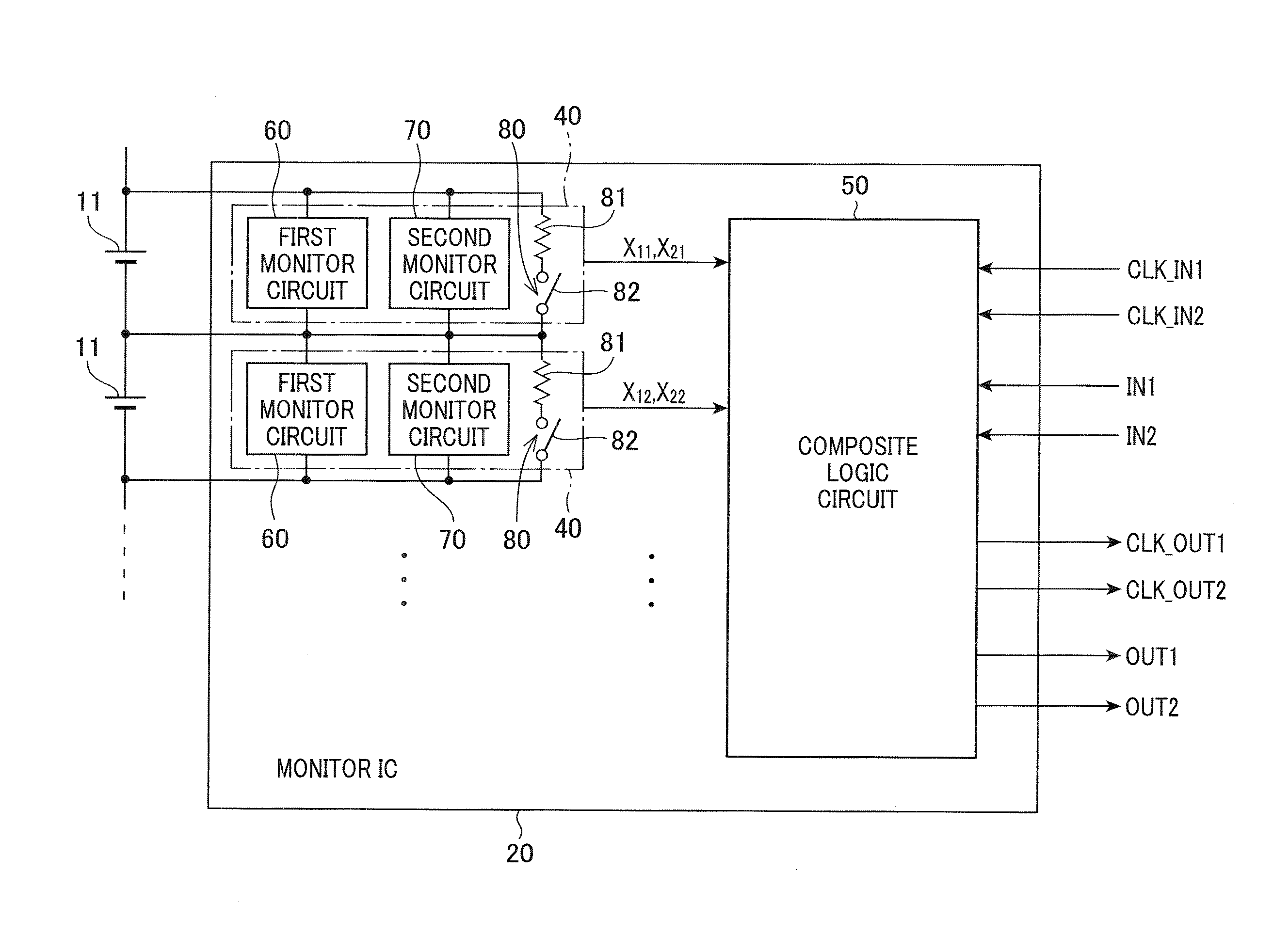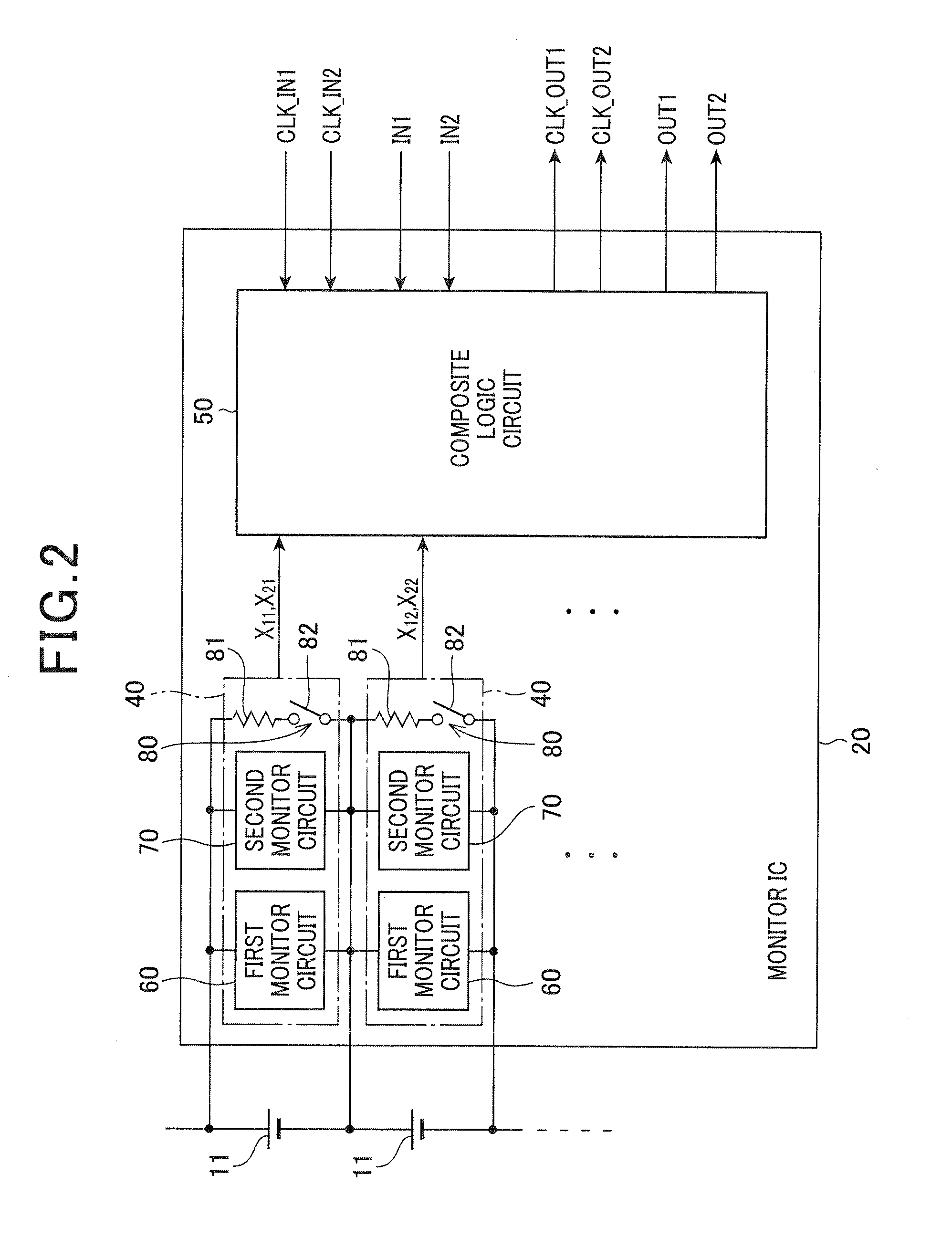Battery fault detection apparatus
a fault detection and battery technology, applied in secondary cells, servicing/maintenance, safety/protection circuits, etc., can solve problems such as erroneous determination of monitoring state, overcharge of cells, and inability to determine whether the monitoring state is possible, so as to prevent making an erroneous determination
- Summary
- Abstract
- Description
- Claims
- Application Information
AI Technical Summary
Benefits of technology
Problems solved by technology
Method used
Image
Examples
first embodiment
[0029]FIG. 1 is a diagram showing the overall structure of a battery control system including a battery fault detection apparatus according to a first embodiment of the invention. As shown in FIG. 1, the battery control system includes a battery pack 10, a plurality of monitor ICs 20 and a microcomputer 30.
[0030]The battery pack 10 includes a series connection of a predetermined number of unit batteries 12 each constituted of a predetermined number (7, for example) of rechargeable battery cells 11 connected in series. In this embodiment, a rechargeable lithium-ion battery is used as the battery cell 11.
[0031]Each of the monitor ICs 20 has an overcharge / overdischarge detection function to detect overcharge and overdischarge of the battery cells 11, and a wire breakage detection function to detect breakage of wires directly or indirectly connected to the battery cells 11.
[0032]The overcharge / overdischarge detection function operates to monitor the battery cells 11 by comparing the vol...
second embodiment
[0097]Next, a second embodiment of the invention is described with emphasis on a difference with the first embodiment. In the above first embodiment, the state-transition fault detection section 51 is configured to detect a fault in the first clock signal, while in the second embodiment, the state-transition fault detection section 51 is configured to detect a fault in the second clock signal.
[0098]More specifically, in the second embodiment, the state-transition fault detection section 51 detects a case where the second clock signal is not received over a period in which the first clock signal has been received a predetermined number of times, and a case where the second clock signal remains at the same level although the first clock signal has been received a predetermined number of times after the second clock signal was received. In the following, there is provided an explanation of the operation of the state-transition fault detection section 51 to cause the pattern generation ...
PUM
 Login to View More
Login to View More Abstract
Description
Claims
Application Information
 Login to View More
Login to View More - R&D
- Intellectual Property
- Life Sciences
- Materials
- Tech Scout
- Unparalleled Data Quality
- Higher Quality Content
- 60% Fewer Hallucinations
Browse by: Latest US Patents, China's latest patents, Technical Efficacy Thesaurus, Application Domain, Technology Topic, Popular Technical Reports.
© 2025 PatSnap. All rights reserved.Legal|Privacy policy|Modern Slavery Act Transparency Statement|Sitemap|About US| Contact US: help@patsnap.com



